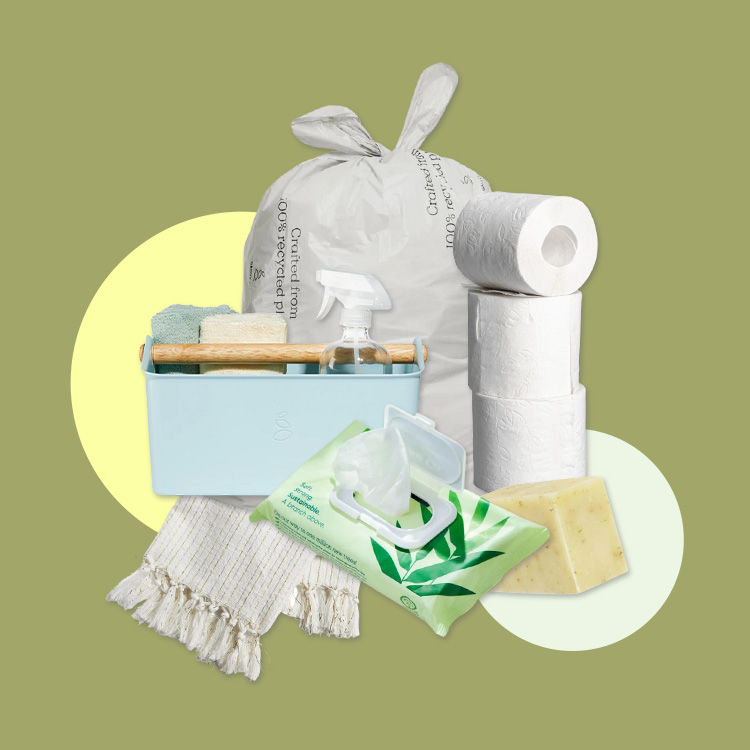If you love fashion, then chances are, you own more clothes than you necessarily need. If changes in season, style, size, trends, and general life choices have left you with a handful (or, dare we say, a garbage-bag full) of items you no longer wear but are in excellent condition, you may have considered reselling as a way to free up some closet space.

Aside from being an effective way to get rid of pieces that no longer bring you joy, reselling your clothing is an eco-friendly practice and (when done strategically) can be a great way to make some extra cash. Thankfully, we’ve long since said “goodbye” to the days of dragging a garment rack out to our front yards and spray painting “yard sale” onto an oversized piece of cardboard. Instead, our good friend the internet has made reselling clothing easier than ever. And while setting up accounts on different selling apps and posting listings is a straightforward process, accomplishing resale success requires some nuance.
Whether you’re considering selling your clothes online for the first time or are a fashion resale veteran, we’ve got you covered with some tried-and-true tips that are sure to get your listings moving.
Include alternative types of photos
Because potential buyers aren’t getting the opportunity to see your garment first-hand, they want to get a good virtual look of the item before they commit to a purchase. Take well-lit images of your clothing item against a plain backdrop, capturing views of the garment from both the front and back. While pictures of the item that you took yourself are important, don’t forget to include a picture of the item from the website if it permits. And if you’re comfortable, you wearing the item and how it fits. Be sure to include a photo of the tag displaying the piece’s brand and size for good measure.
Be honest in your listing
Disclose if your home is smoke-free or pet-free. You never want a buyer to avoid clicking “order” on a used clothing item because they’re wondering if it has an odor attached to it. If your home is smoke-free, pet-free, or both, be sure to disclose that information in your product description to ease shoppers’ minds. Also, be honest about how much usage you got out of the particular listing, how it held up after you purchased it, and if it has any natural wear-and-tear.
Price to sell, not to make a fortune
When pricing your items, put yourself in the mindset of potential buyers. Ask yourself what you would realistically pay for the item, also taking into account what the individual will have to pay for shipping. Price your garments low enough so that buyers feel like they’re getting a bargain and you’ll see your inventory fly off your virtual shelves.
Be aware of the name of your item
Many secondhand shoppers will search specific items such as “Aritzia Melina Pants,” or “Lululemon Align Leggings.” If you know the name of your item, include that in the title so shoppers can easily find what they’re looking for and what you’re selling.
Maximize your title field
People are busy! This means they won’t necessarily read the beautifully written description you’ve typed up to describe that cashmere sweater that you love but no longer fits or the graphic concert tee you wore on repeat in college that no longer suits your work week rotation. Putting as much info in the title field as possible allows for potential buyers to gain more information while they’re scrolling. For example, even if you’re listing the item’s brand in a specific field within the listing, it’s also helpful to reiterate it in the title. For instance, “Like New Madewell Denim” is sure to catch scrollers’ attention over “Jeans.”
Choose your platform based on brand and style
There are so many different ways to sell clothes online—Facebook Marketplace, Poshmark, Depop, and ThredUp are popular avenues, to name a few. The truth is, they all have their advantages and disadvantages.
For pro-seller success, choose where to list your items based on their style and brand. Refining this skill takes practice, but there are a few general rules that can help you get started. For example, Facebook has a lower selling fee, which means you can price your items lower on this site and still make a decent profile. For this reason, garments from value brands such as Old Navy and H&M perform well on this platform.
On a similar note, both Poshmark and ThredUp shoppers are looking for mid-range fashion brands, so be sure to take your Abercrombie & Fitch, Madewell, and Zara pieces there. Closet full of vintage, designer, or style-specific pieces? Depop is your haven.
Be responsive and ship in a timely manner
Potential buyers often have questions related to the items you’re selling: Does it fit true to size? Is the wool itchy? Are you willing to negotiate on the price? Responding to questions and inquiries in a timely fashion will increase your likelihood of making a final sale. Once the item is sold, be sure you get it to the post office within a couple of days. Doing so will keep your buyers happy and make them more likely to leave you a positive review.
Don’t forget to stick up for yourself if you need to
Listing an item for sale online brings out all types of people from interesting corners of the internet. Be sure to be aware when someone interested is acting particularly shady, or just trying to waste your time. Asking the right questions and using trusted sites will help you be aware if a buyer is worth your time or not.
The post I’ve Made Thousands Selling Clothes Online—Here Are My Best Tips appeared first on The Everygirl.

